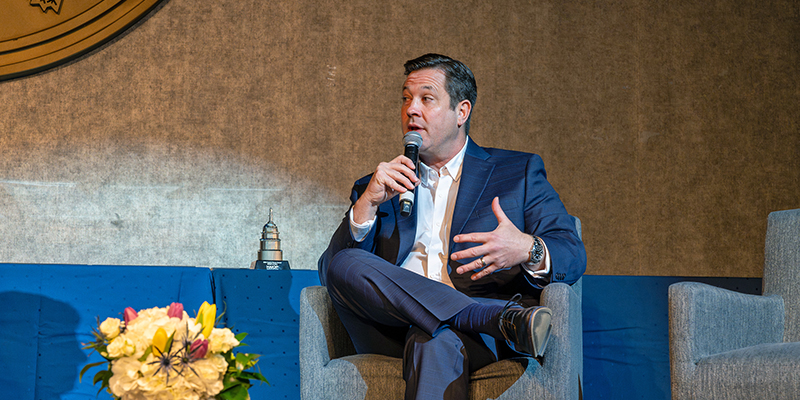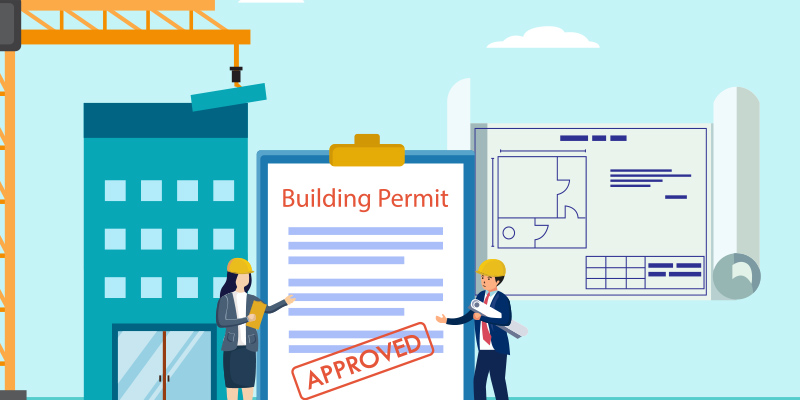The year is off to a busy start in Washington, D.C.
Lawmakers face a key deadline this week. Without action, the federal government would run out of money on Thursday. That would be the second shutdown of the year. In the longer term, Congress must also raise the debt ceiling by next month, and try to find a bipartisan deal on immigration policy. Meanwhile, lawmakers and the White House are discussing which national security memos to release, and what those memos actually mean.
In the midst of all this, hundreds of NAIOP members from across the United States and Canada are in Washington for the annual Chapter Leadership and Legislative Retreat (CL&LR). A highlight of the gathering came when the NAIOP Board of Directors met at the Capitol. Board members heard from three GOP senators: Cory Gardner of Colorado, Thom Tillis of North Carolina and Roy Blunt of Missouri. Each discussed key NAIOP priority issues.
Before they went to the Hill, CL&LR participants heard from keynote speaker Donna Brazile, Hillary Clinton’s 2016 campaign manager. “We need to be in a political climate where we can cut a deal,” Brazile said. Even as she was speaking, lawmakers were discussing just such a compromise, one that would lift congressional spending caps through 2019.
At last year’s gathering, the spotlight was on tax reform. That conference teed up the debate that policymakers then engaged in throughout the year. In a success for commercial real estate, President Donald Trump signed a tax reform measure at the end of 2017 that slashed overall tax rates yet maintained tax incentives that are important to the CRE industry. One example includes 1031 Exchanges, which were eliminated for personal property, but were preserved for real estate transactions.
At this year’s CL&LR, NAIOP members are attending sessions focused on the association’s 2018 priority issues:
- Infrastructure and transportation.
- Capital and credit.
- Environment and Energy Efficiency.
After hearing from experts on each of these areas, NAIOP members are meeting with lawmakers and staffers on Capitol Hill to deliver three one-page issue briefs that include the association’s message on these topics.
In one CL&LR session, attendees were reminded that our nation’s infrastructure is failing, with one out of every five miles of highway pavement in poor condition. The president’s proposal hasn’t been fleshed out yet, but in his Jan. 30, 2018 State of the Union address Trump called for federal spending of $200 billion that could then leverage up to $1.5 trillion in infrastructure investment.
Democrats and Republicans generally support federal spending on infrastructure, and an infrastructure improvement bill could get the nine Democratic votes in the Senate that would be required to pass any legislation. Several Democrat senators are running in states Trump carried easily last year, including West Virginia, North Dakota and Missouri. NAIOP supports the expanded use of public-private partnerships for infrastructure development, continued federal funding for maintenance and repair of facilities, and a more effective regulatory environment for major infrastructure projects.
On the availability of capital and credit, NAIOP is mostly concerned about ensuring good policy in the years ahead. While interest rates are low today and credit is available, that isn’t always going to be the case. Current capital reserve requirements are onerous, and unfairly discriminate against CRE. A bill pending in the House of Representatives, H.R. 2148, would help address these problems and ensure that adequate capital is available in the future.
As for energy and the environment, NAIOP supports maintaining the Energy Star Portfolio Manager program, which serves to boost real estate values. It also supports the EPA’s Brownfields Program, which increases economic development and improves the environment. The House has passed H.R. 3017 to renew the Brownfields program. A Senate measure, S. 822, is pending. Federal legislation advancing building code efficiency goals should be based on economic and technological feasibility.
Along with pressing for particular proposals and policies, NAIOP members are also pushing legislators to help speed up the permitting process for new projects. The permitting time for new projects can range up to seven years. President Trump wants to get that down to two years.
The year 2018 is an election year, of course, which may make it more difficult for legislators to reach compromises. However, NAIOP members are deal-makers. If policymakers can follow their lead, it’s still possible to enact good public policy this year.
Pictured: Representatives from NAIOP Colorado meet with Senator Cory Gardner on Capitol Hill. Photo by Dennis Brack.














